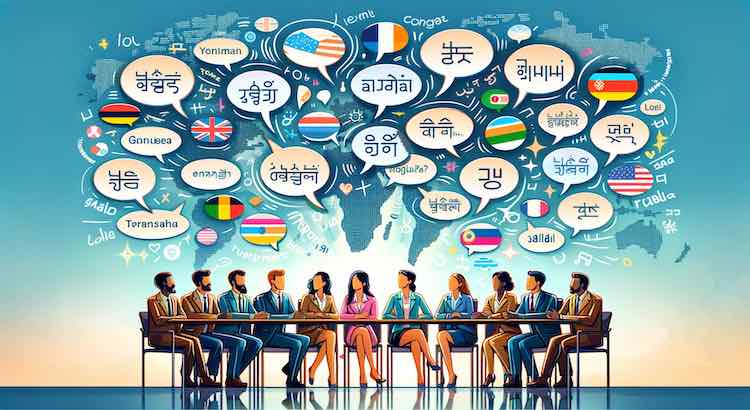The Importance of Transcription in Multilingual Market Research
Market research is the foundation for successful business decisions in today’s interconnected world. Companies use it to understand consumers, spot new trends, and shape products or campaigns. Multilingual market research, which spans several languages and cultures, is becoming more common as global trade grows.
However, conducting market research in many languages introduces new challenges. Capturing accurate consumer feedback requires effective communication and careful analysis. This is why transcription services play a key role—they remove language barriers and help researchers access, organize, and analyze information, no matter which language respondents use.
Why Transcription Services Matter in Multilingual Market Research
Qualitative research like interviews and focus groups is common in market research. These sessions often happen in native languages, letting participants express true feelings and share details freely. For businesses to benefit, they need these recordings turned into text, and often, translated into a common language.
- Transcription makes information easier to review and share.
- It supports data coding, comparison, and trend spotting.
- Transcripts serve as evidence and a record of research findings.
According to a Statista report, over 61% of market research companies collect global data (2022). Handling this volume would be impossible without reliable transcription.
The Language Barrier: Main Challenges
Multilingual transcription is more complex than just writing down words. Each language has slang, idioms, and industry terms that add nuance or meaning.
- Idiomatic Expressions: Some phrases do not translate directly and can lose meaning.
- Cultural References: Context changes the meaning of a word or story.
- Technical Language: Industry terms must be exact to maintain accuracy.
If meaning is lost, market insights can be misleading. Quality transcription is a must for accurate analysis.
Best Practices for Transcribing and Translating Multilingual Research
Careful planning and skilled professionals make multilingual market research valuable.
-
Hire Native Speakers
- Native speakers spot cultural references and tone.
- They catch local slang, subtle cues, and unintended biases.
-
Keep Terminology Consistent
- Use glossaries or translation memories for keywords and phrases.
- This is vital when multiple translators work on a project.
-
Preserve Meaning and Intent
- Literal translations do not always work. Skilled translators adapt tone, emphasis, and style.
- Maintaining the original speaker’s intent prevents misinterpretation.
-
Double-Check Accuracy
- Quality assurance is key. Double-blind transcription or proofreading by a second expert can help.
- Discrepancies are caught before final delivery.
- Professional services like transcription proofreading add another layer of reliability.
-
Use Technology Wisely
- Automated transcription software can speed up the process but needs human review for accuracy.
- Combining human expertise and technology leads to fast and precise results (Gartner, 2023).
How High-Quality Transcription Impacts Market Research
Accurate transcription enables researchers and decision-makers to get a full view of consumer attitudes, values, and needs. The benefits include:
-
Diverse Insights
- Capture perspectives from every region or language group.
- Larger, more representative data sets boost credibility.
-
Faster Analysis
- Researchers can search transcripts for keywords, themes, or patterns.
- They can also compare responses among demographics or countries.
-
Stronger Global Strategies
- Findings influence decisions about product development, marketing, and support.
- Brands show respect by including voices from many backgrounds.
A study by McKinsey found that diverse teams outperform their peers by 35% in decision-making (2020). Multilingual transcription ensures all perspectives are included.
When adding translated captions or subtitles, closed caption services and subtitling services make video content accessible to wider audiences. Multilingual solutions maximize the research’s impact and value.
Transcription and Translation: Tools for Multilingual Research
Businesses can choose between human, automated, or mixed transcription workflows.
- Human transcription offers high accuracy and handles complex content with cultural sensitivity.
- Automated transcription is fast and cost-effective for large projects.
- AI subscriptions provide ongoing support for clients with regular needs.
- Text translation services and audio translation ensure research reaches global stakeholders.
Pricing for these services is now very competitive. Explore transcription pricing or captioning services pricing for more details.
Conclusion
Transcription is not just a step in the process—it is the key to clear, effective market research in a multilingual world. By using best practices like hiring native speakers, ensuring consistency, and leveraging smart technology, companies can turn complex language data into actionable insights. This helps brands make strong, inclusive decisions and keeps them competitive in the global market.
If your business needs reliable solutions for multilingual market research, GoTranscript offers transcription services, translation, closed captioning, subtitling, and more to help you break language barriers, stay compliant, and reach audiences everywhere. Start your project now by ordering transcription or ordering captions today.



















 Verified Order
Verified Order